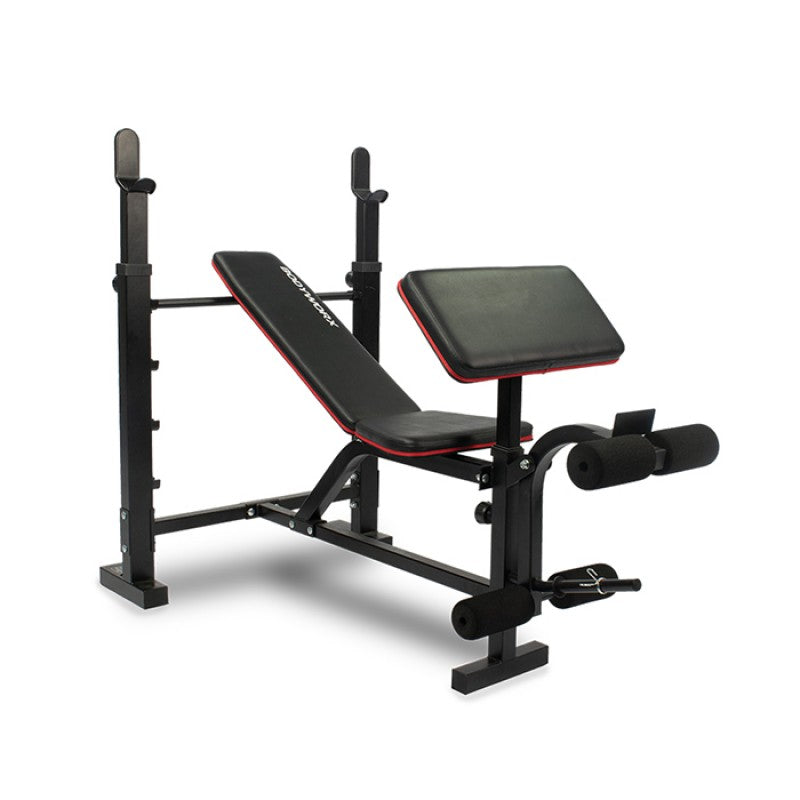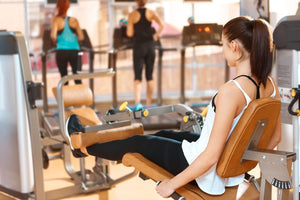
No matter your expertise or degree of fitness, anybody may experience a workout injury. An injury may result from simple walking. The most frequent injuries in the fitness community are those involving the back, knees, and shoulders.
The most frequent reason for injury is abruptly raising the exercise’s intensity and over-training!
Injury during exercise may generally be attributed to doing too much too fast and to a lack of sufficient mobility and strength. For instance, increasing your miles too quickly when running might result in stress fractures in your lower leg, or joining a group fitness class that uses heavy weights can harm you by overworking and overtaxing your muscles.
Most Common Exercise Injuries
During exercise, people might harm themselves in a variety of ways. Common injuries incurred through exercise include:
- Strained Muscles
- ankle Sprains
- Shoulder injury
- Knee injuries
- Shin splint
- Tendinitis
- Wrist sprain or dislocation
- Lower Back Sprain
- Elbow Injuries
- Pulled Groin
- Equipment-Related Injuries
Causes & Risk Factors Of Injury While Exercising
Exercise injuries have a variety of common causes, including the following:
- Not warming up before you work out
- Overusing muscles and doing the same move repeatedly
- Using improper form when exercising
- Not taking a break in between exercises
- Overexerting or overloading your body
- Exercising too hard relative to your fitness level
- Not using equipment properly
Prevention Of Injury Risk
Get Stronger Without Putting Your Body At Increased Risk For Injury
Here are some tips for protecting yourself from injuries when working out.
1. Warm-Up & Cool-Down

Every exercise session should start with a warm-up and conclude with a cool-down. Your body prepares for activity with the aid of a warm-up. Your heart rate will progressively rise as your muscles and joints will become more flexible.
- Riding a stationary bike, jumping rope, or jogging in place for 5 to 10 minutes are some ways to warm up:
- After working out, you should cool down to gradually return your heart rate to normal. One technique to cool down after working out is to go for a 5- to 10-minute walk.
2. Cross-Train ─ Don’t Stick To One Form Of Exercise

Change up your workout. Avoid overusing one group of muscles. Overuse and repetitive-use conditions like shin splints and tendinitis can develop when the same muscular motions are often repeated.
Create a workout regimen that combines aerobic, strength training, and flexibility. This will lessen your risk of getting hurt. Exercise both aerobically and anaerobically to keep your muscles and cardiovascular system in shape and to fortify your body against injury.
Some ways to vary your workout:
- Day-1 ─ Cardio, Jogging, Walking
- Day-2 ─ Lift weights
- Day-3 ─ Swim or Cycle
3. Dynamic Stretching

Dynamic stretching should be done before and after exercise. Flexibility will be improved as a result. Exercises that stretch the muscles can make them more capable of performing and contracting, which lowers the chance of injury.
Each stretch should begin slowly until you feel some tension in the muscles. It shouldn’t hurt to stretch. At each stretch, try to hold it for up to 20 seconds. Stretching is best done after warming up and cooling down.
4. Know Your Problem Spots

Adjust your workout to address trouble areas. For instance, you should develop strength if you have knee arthritis. But, avoid doing workouts that hurt.
Avoid engaging in any activity that might cause an injury. Any action that exerts pressure on the affected area should be avoided. Speak to your doctor. And remember to start slowly.
5. Go for Gradual Progression ─ Avoid Over-extension/Over-exertion

Start gently when you start a new fitness regimen or training programme. The strength, duration, and frequency should then be increased progressively.
Don’t exert too much effort. You will be able to challenge yourself more as your fitness level improves. To prevent an injury from overexertion or overextension, gradually increase your workout regimen.
6. Use The Proper Technique & Form

Exercising involves putting our body through physical stress. The poor form indicates that the body is not properly positioned. This puts undue strain on our tendons and joints, which might cause damage and pain that lowers our quality of exercise. Using proper form can assist with this.
If you’re brand new to an activity or sport, think about taking classes to master the fundamentals. Injury may be avoided by learning how to exercise or play a sport properly.
7. Use Equipment Correctly

Large, hefty weights and sturdy machines are commonplace in gym equipment, such as treadmills, stationary bikes, rowing machines, smith machines, squat racks etc.
Be careful not to drop free weights on your toes while setting them down and keep an eye out for weights lying around the area to prevent falling. Use the right load of free weights for working out. Overloading your muscles with the heaviest free weights will simply over-tax your muscles leading to an injury.
Make careful you read the equipment’s safety instructions and instructions for use. These directions are simple to understand since they frequently include illustrations showing how to use them and safety advice.
Before turning on the cardio machine, make sure your shoes are fastened firmly and neatly so you are fully prepared to start.
8. Schedule Rest Days ─ Do Not Over-Train

Take a day or two off each week to relax. Your body needs to rest on days off in between workouts. This will aid in avoiding injury and maximise your exercise gains.
You shouldn’t work out every day, even if you want to. A rest day is often required after three to five days of physical exercise to allow your body to repair and recover.
Avoid pushing yourself over your pain threshold. You could have an injury if you experience severe pain. in such a scenario, put an end to your training immediately and turn to rehabilitation to heal the injury.
9. Consult A Certified Professional Trainer

Consult a trainer before beginning an exercise or weightlifting programme. If you want to avoid moving your body improperly when exercising or playing a sport, working with a trainer or coach will help you learn the correct technique. They can demonstrate the proper form for exercising. Your trainer will assist you in developing a safe and practical fitness regimen.
10. Fuel Your Body

Be sure to stay hydrated before, during, and after your workout. Drink 17 to 20 ounces of water around 2 or 3 hours before working out to get a healthy start.
Before working out, have a snack to provide your body with a consistent supply of fuel. Have a nutritious carb and protein meal or snack after your workout to refuel your energy reserves.
11. Wear Supportive Gear & Exercise On Nonslip Surface

Wear the appropriate workout attire. Use the proper tools or clothing and wear supportive shoes that may correct specific foot troubles that might result in injuries. If you run, make sure your shoes are comfortable and of high quality. Also, you should always exercise on a hard, level, the nonslip surface to prevent slipping and falling.
Conclusion
We may be tempted to speed through our workouts or push ourselves harder to achieve a healthy body weight quickly as we embark on our road to better health. Speed up! Rushing through exercises reduces their effectiveness and halts progress.
Make sure you don’t bite off more than you can chew. Don’t overextend yourself if you’re just beginning to exercise after a long time of inactivity. When working out, you may stay safe and avoid several injuries by following the above simple guidelines.
Learn the fundamentals of form and technique before moving on to more difficult exercises. Always warm up before working out and stretch afterwards to cool down. If you experience any pain, stop. Before beginning any fitness programme, speak with your doctor, and exercise carefully.
It’s crucial to bear in mind these suggestions to prevent an injury when exercising if you want to stay safe and benefit from exercise.
Remember, safety first!
Disclaimer
The information provided on this website is intended for general informational purposes only and should not be considered professional or medical advice. We make every effort to ensure the information provided is accurate and up-to-date, but we cannot guarantee the accuracy, completeness, or timeliness of the information. Any reliance you place on such information is strictly at your own risk. Always consult a qualified professional before making any significant changes to your diet, exercise routine, or lifestyle. We are not responsible for any adverse consequences resulting from the use of, or reliance on, any information provided on this website.
 All Payment Methods are Accepted
All Payment Methods are Accepted









